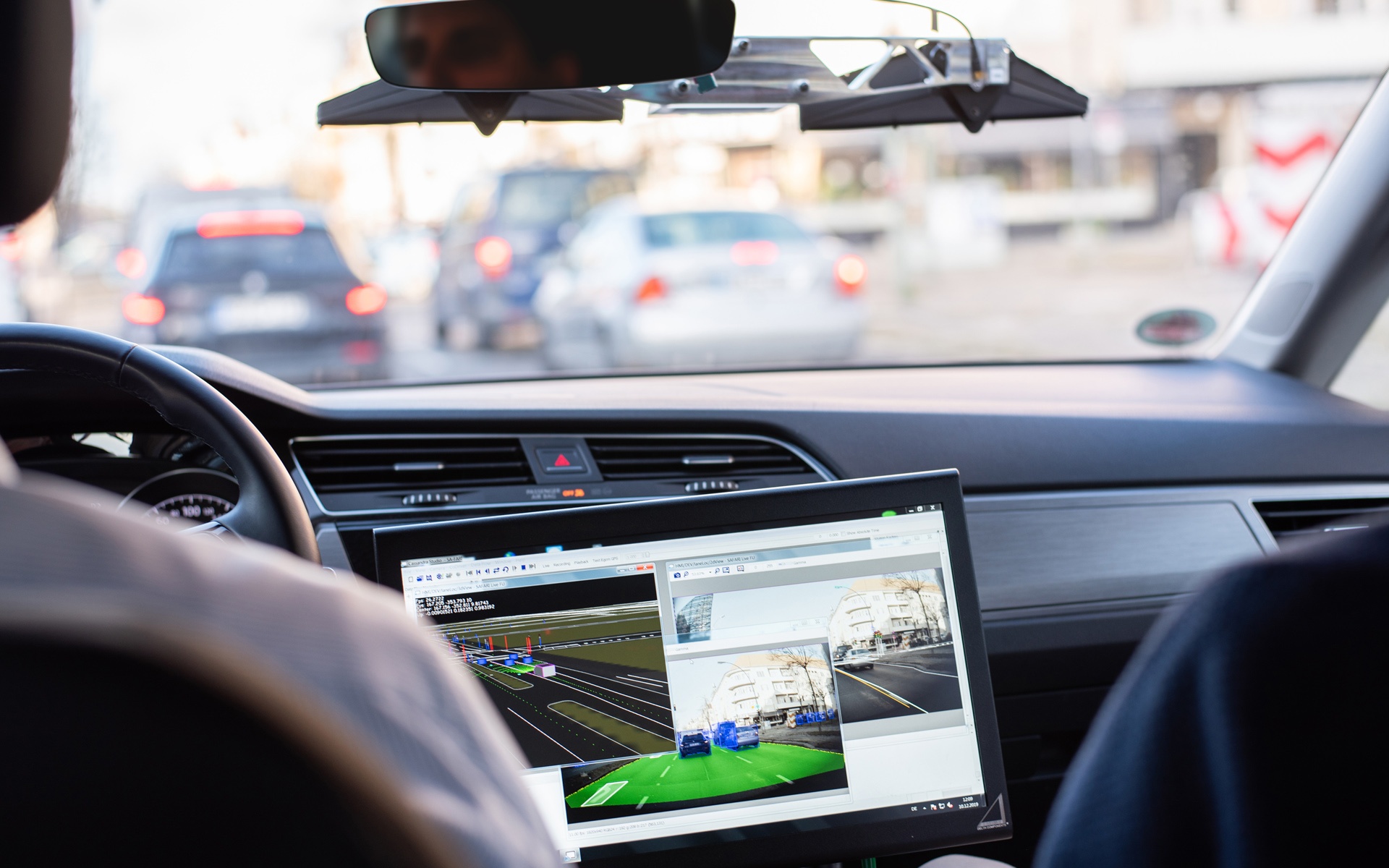- Berlin research project examines dynamic road maps for automated and connected driving
- HELLA Aglaia as project partner for sensor technology and environment perception
- Requirements for real-time map updates established
Berlin, Germany. Precise digital maps are one of the basic requirements for safe automated and connected driving. Over the past two and a half years, the SAFARI project, which is managed by the Berlin Senate Department for the Environment, Transport and Climate Protection, has examined the exchange and update of digital road maps by autonomous vehicles. As a research partner, HELLA Aglaia Mobile Vision GmbH was responsible not only for requirements analysis and system design, but also for environment perception. At the closing event on December 10, the SAFARI project partners jointly presented their results at the test bed in the Berlin district of Reinickendorf.
From the point of view of autonomous vehicles, driving situations on motorways or country roads are usually clearly structured. The situation is quite different in urban areas: roadworks, closures of individual lanes, parking offenders or pedestrians on the road make navigation much more complex. The more up-to-date the navigation information for autonomous vehicles, the more likely it is that dangerous situations can be mitigated.
Detection of the vehicle environment with the front camera
A specialist for visual sensor systems, HELLA Aglaia developed a camera-based environment detection system as part of SAFARI. The aim of the work package was not only the self-localisation of the vehicle, but also the perception and classification of its surroundings so that this information can be fed into a dynamic road map to be used by other road users as well. If vehicles are travelling autonomously, the comparison of information from map material and imaging sensors provides the basis for navigation. As in series-proven driver assistance systems, complex algorithms first evaluate the images from the front camera and detect, for example, vehicles, people, traffic lights or road markings. In addition to this information, which is relevant for driving manoeuvres, the own GPS-determined position within the map is defined in more detail by the recognition of local orientation points such as manhole covers or known road signs.
Development of free space detection in urban traffic
In addition, HELLA Aglaia developed a free space detection module for SAFARI that detects the navigable areas around the vehicle and thus allows to draw conclusions about available parking spaces, parking offenders or road works. The collected information on localisation and vehicle environment was transmitted to the map administration in real time via a wireless interface. For the functional test, HELLA Aglaia specially equipped a test vehicle with camera technology ready for series production. Around 16 kilometres of main and secondary roads were available on the Digital Testbed Urban Traffic in the north of Berlin. As part of a continuation of the project, it is planned to prepare the acquired data in a process-oriented way. Summarised statistical findings could, for example, provide information in urban management about the parking spaces required or critical traffic junctions.
About SAFARI
The SAFARI project is funded by the Federal Ministry of Transport and Digital Infrastructure (BMVI) within the framework of the funding guidelines “Automated and connected driving on digital test beds in Germany”. Further information on the project and the companies involved is available online at www.testfeld-berlin.de.

